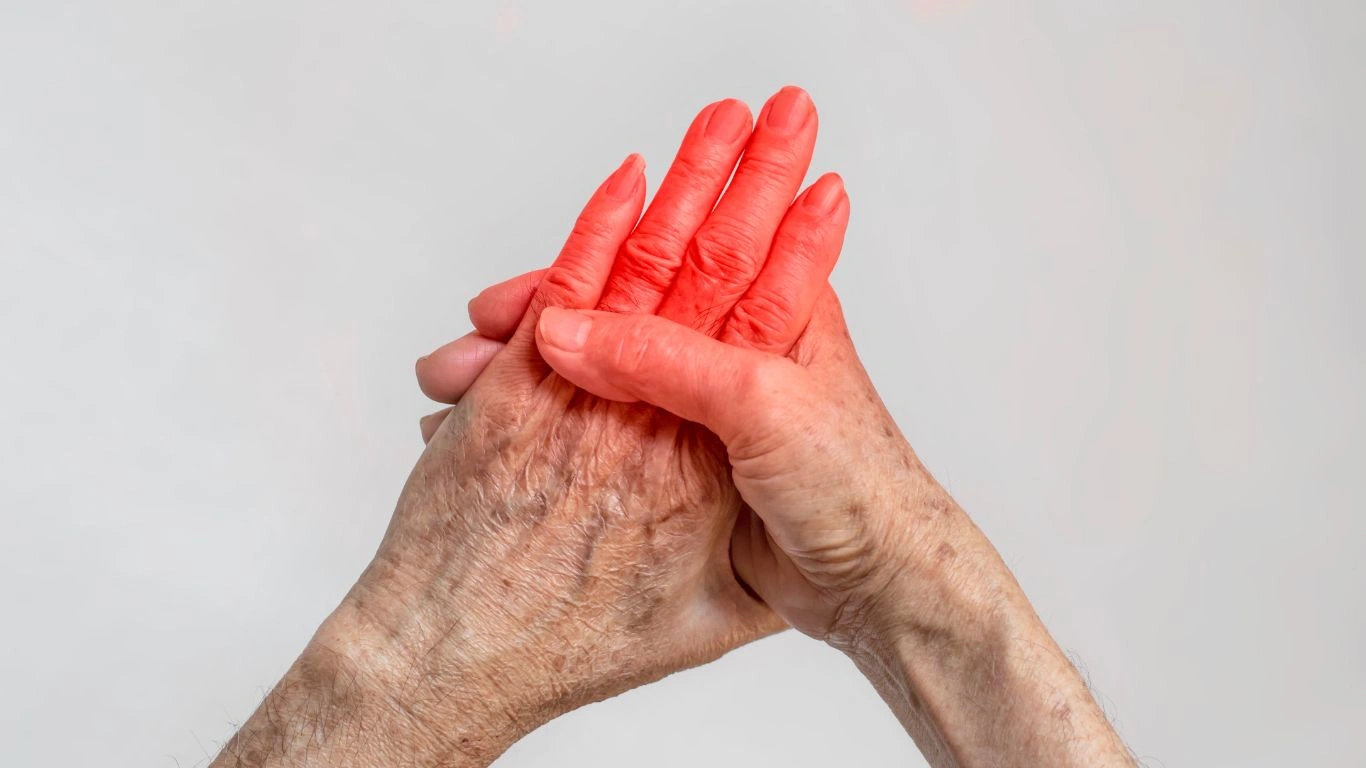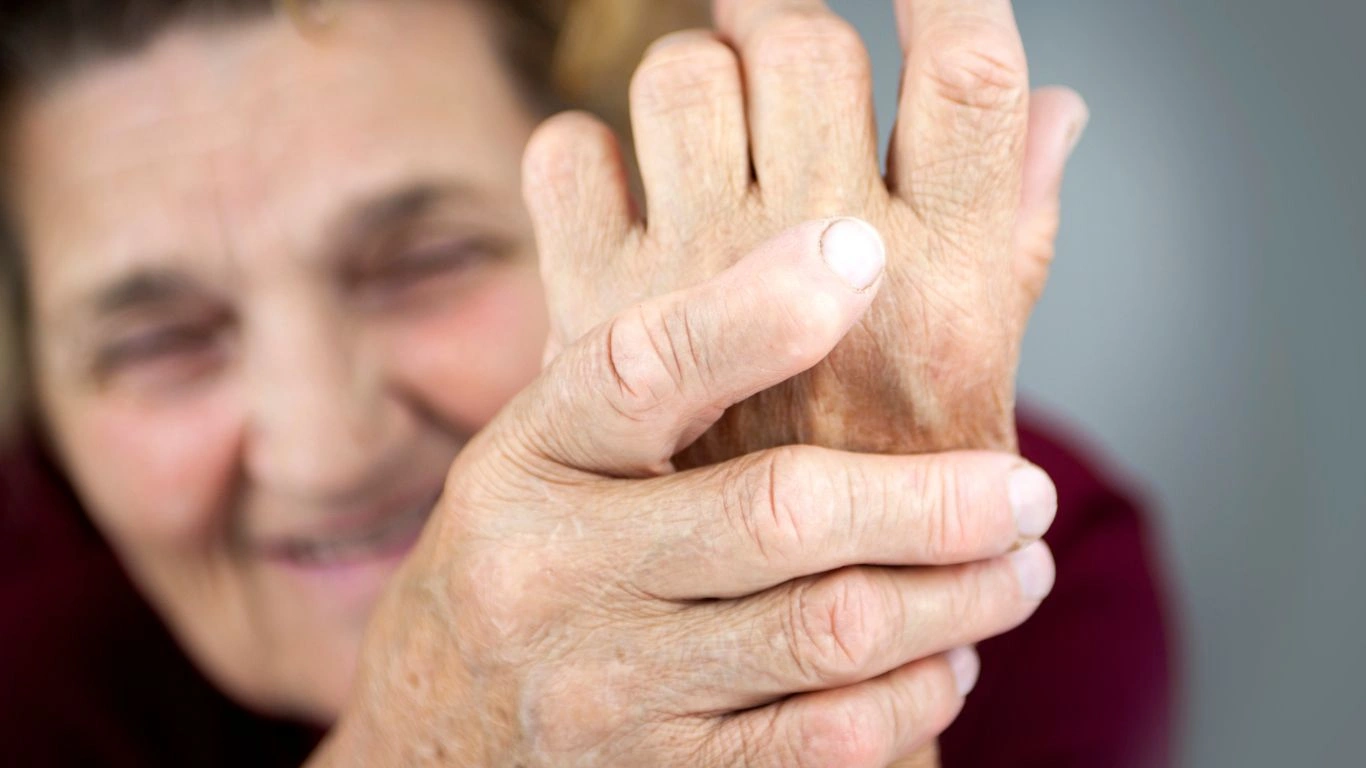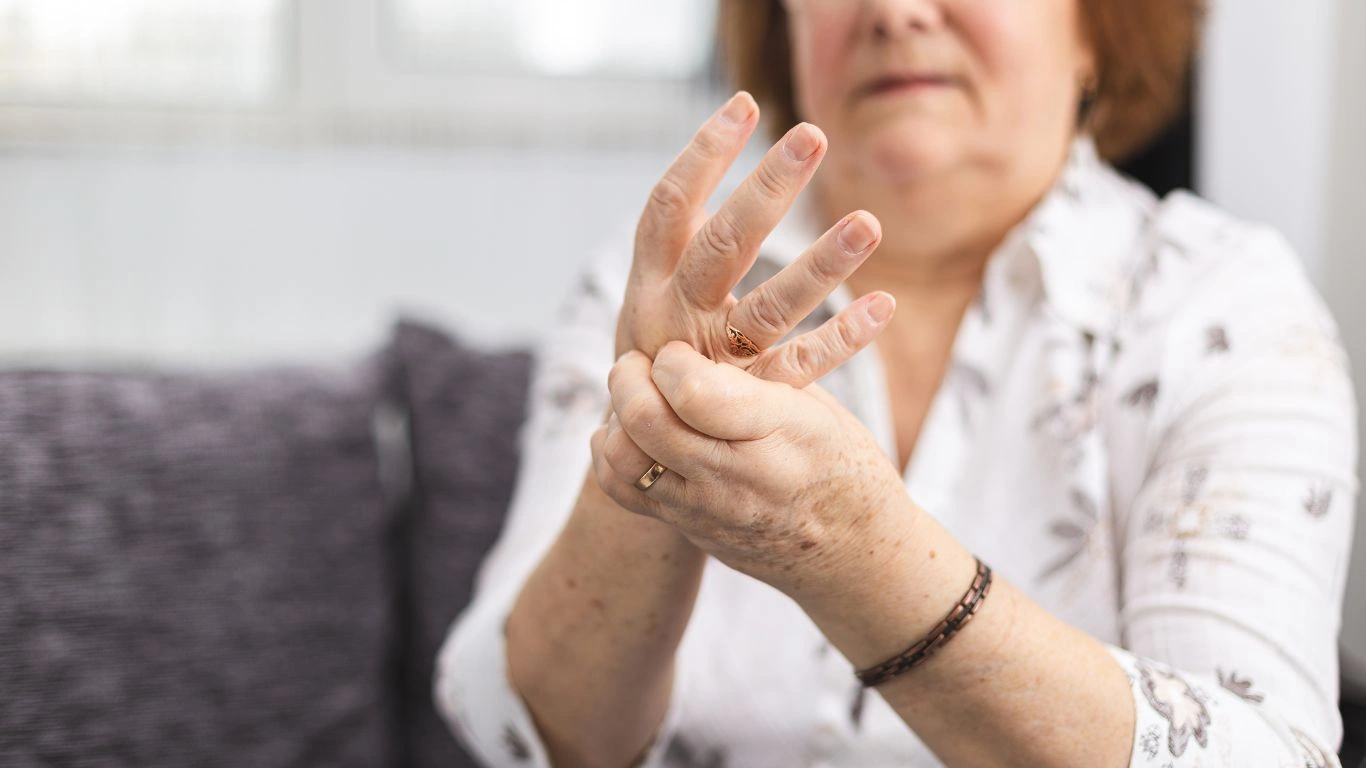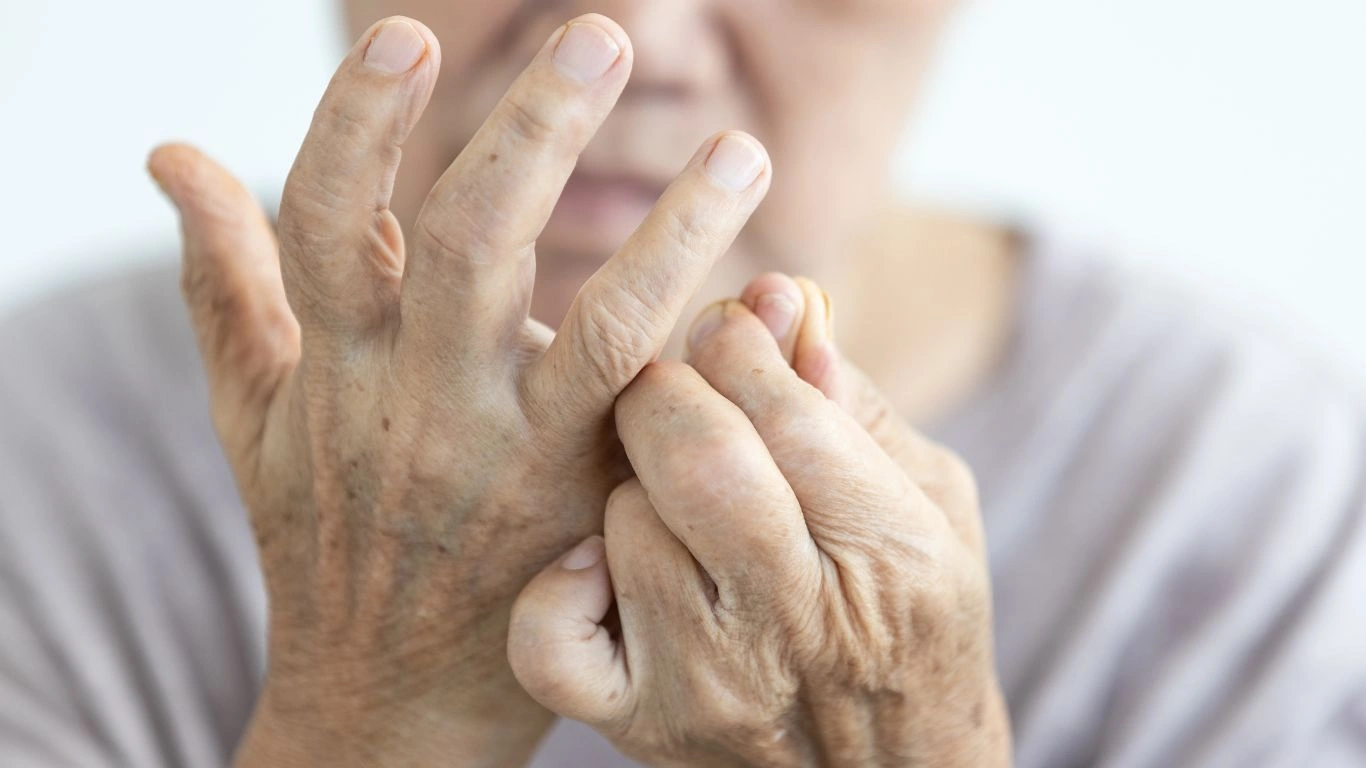Best Essential Oils for Rheumatoid Arthritis Pain Relief That Actually Work
If you’ve ever watched someone you care about struggle to get out of bed in the morning because of joint pain—or maybe you’ve been there yourself—then you know how real and frustrating rheumatoid arthritis can be. As a Rheumatology Nurse Practitioner, I’ve had the privilege of walking side-by-side with patients navigating this condition daily. Over the years, I’ve found that the blend of traditional treatments with more holistic approaches, like essential oils, can create a truly empowering pain management plan. So today, I want to chat about something many of my patients ask me about: rheumatoid arthritis and essential oils for pain relief. And no, this isn’t some fluffy wellness trend—we’re talking about science-backed plant magic that can actually complement what you’re already doing with your meds.
What is Rheumatoid Arthritis, Really?

Let’s break this down in plain English. Rheumatoid arthritis (RA) isn’t just “arthritis.” It’s an autoimmune disease, which means your immune system—normally your body’s defense team—gets a little confused and starts attacking your joints. This leads to inflammation, stiffness, and that deep, aching pain that makes getting through the day a serious challenge.
I can’t tell you how many times I’ve seen people brushing it off as “just getting older.” Nope. RA doesn’t care if you’re 25 or 65. It can hit at any age, and it tends to hang out for the long haul. But here’s the silver lining: with the right strategies, from medications to mindfulness—and yes, essential oils—it’s absolutely possible to find relief and reclaim a sense of control.
Why Consider Essential Oils for Rheumatoid Arthritis Pain Relief?

Okay, let’s get something straight right off the bat: essential oils are not a cure. But they can be a supportive piece of your pain relief puzzle. I’ve had patients swear by them—not as a replacement for their DMARDs or biologics—but as a soothing tool in their self-care toolkit. And you know what? That matters.
Here’s why essential oils can be helpful when you’re dealing with RA:
- Anti-inflammatory properties: Some oils, like frankincense and ginger, have natural compounds that help calm inflammation.
- Analgesic effects: Oils like peppermint or eucalyptus can produce a cooling, numbing sensation that helps take the edge off pain.
- Stress reduction: Let’s be real—living with chronic pain is stressful. Oils like lavender can help lower stress levels, which may indirectly help manage flares.
Personally, I’ve seen patients benefit from combining lavender and frankincense in a diffuser during their evening wind-down routines. One patient told me, “It’s the only thing that gets me through the night without tossing and turning from the pain.”
Top Essential Oils I Recommend (and Why)

1. Frankincense
Frankincense isn’t just for ancient rituals—it’s actually a go-to in my book. This oil contains boswellic acids, which help block inflammatory substances in the body. I often suggest a few drops in a carrier oil like jojoba, then massaged gently into the joints.
2. Peppermint
This one’s a favorite for a reason. Peppermint oil has menthol, which cools on contact and provides a mild numbing sensation. I usually recommend it for temporary relief on especially sore days—just make sure to dilute it well to avoid skin irritation.
3. Lavender
Yes, it smells amazing—but it’s also been shown to reduce anxiety and promote better sleep. For people with RA, quality sleep can mean fewer flares and better healing. Sometimes, just a warm bath with lavender oil can make a world of difference.
4. Ginger
Ginger isn’t just for upset stomachs—it’s a powerhouse anti-inflammatory. I’ve seen it work wonders topically when combined with turmeric oil for more stubborn joint pain.
5. Eucalyptus
This one opens up your airways and your sore muscles. I like using it in a warm compress—just a few drops in hot water, soak a cloth, and apply to the aching joints. It’s a small ritual, but sometimes those are the best kind.
Safety Tips (Because More Isn’t Always Better)
Look, I know it’s tempting to go full DIY essential oil guru—but please remember these tips:
- Always dilute your oils. A few drops in a carrier oil (like coconut or jojoba) is key. Undiluted oils can cause burns or allergic reactions.
- Do a patch test. Before using a new oil, test it on a small area of your skin to see how your body reacts.
- Watch for interactions. Some oils can interfere with medications. Talk to your healthcare provider (hopefully someone like me!) if you’re not sure.
There’s nothing more frustrating than trying something natural only to have it backfire. The goal is supportive, not stressful.
How to Use Essential Oils Effectively for Rheumatoid Arthritis Pain

Now that we’ve talked about which oils might help, let’s get into the nitty-gritty—how to actually use them without feeling overwhelmed or turning your bathroom into a science lab. Over the years, I’ve helped a lot of folks build simple, sustainable routines using essential oils. Trust me, you don’t need a shelf full of vials and fancy gear. Start small. Get to know what works for your body.
Topical Application
This is the go-to method I recommend for my patients. Mixing a few drops of essential oil with a carrier oil and massaging it directly onto inflamed joints can provide noticeable relief. I usually suggest starting with 2–3 drops of essential oil per teaspoon of carrier oil.
Pro Tip: Try warming the oil mixture slightly before applying—it feels amazing on stiff, achy hands in the morning. Just make sure it’s warm, not hot!
Diffusion
If stress and fatigue are triggering your flares (which is super common in RA), a diffuser can be your best friend. Essential oils like lavender, frankincense, or even bergamot can help you unwind. I’ve had more than one patient tell me that 20 minutes with a diffuser running in the background changed their whole day.
Compresses
This is a more “old school” method, but it works. Add a few drops of oil to a bowl of warm (or cool) water, soak a washcloth, wring it out, and place it over the affected area. Eucalyptus and ginger are great choices here. I sometimes do this myself after a long day on my feet—it’s like a mini spa moment for sore knees.
What Science Says About Essential Oils for Rheumatoid Arthritis

Alright, let’s pause the cozy vibes for a second and talk evidence. I know firsthand how important it is to trust what you’re putting on your body. There’s a reason essential oils keep coming up in clinical discussions—they’re not magic, but they’re not fluff either.
- Frankincense: Research shows it may inhibit certain inflammatory pathways, similar to NSAIDs, but without the harsh side effects.
- Lavender: Multiple studies link lavender aromatherapy with lower cortisol levels and improved sleep—both huge for chronic pain management.
- Peppermint and Eucalyptus: These are commonly studied for their analgesic and muscle-relaxing properties, often cited in pain management literature.
When patients ask me if essential oils are “legit,” I usually say: They’re not a miracle cure, but they’re far from useless. Combined with what your rheumatologist is prescribing, they’re a safe way to layer on comfort without loading up more pills.
Real-Life Experiences: What My Patients Say

Over the years, I’ve kept a mental notebook of the little wins my patients have shared. Sometimes, it’s not just about what the oil does, but the ritual of self-care itself. That pause to apply a warm compress or run a diffuser—it adds a sense of calm to what can feel like a chaotic disease.
Maria, 58:
She swears by a nightly lavender and frankincense diffuser combo. “It’s the only way I can fall asleep without focusing on my knees,” she told me once during a follow-up. “It’s like my body knows it’s time to shut down.”
Darnell, 42:
He uses a peppermint/eucalyptus blend after working on his feet all day. “It doesn’t cure me,” he said, “but it cools down the burn. That’s enough to keep me from reaching for ibuprofen again.”
Lydia, 35:
She created her own morning ritual with ginger oil applied to her wrists and ankles. “It’s part pain relief, part mental prep. Like I’m telling my RA, ‘Not today.’”
I love hearing stories like these because they remind me that healing isn’t just about prescriptions—it’s about empowerment.
Mixing Your Own Essential Oil Blends at Home
Creating your own blends might sound intimidating, but it’s easier than you think. Here’s a quick starter recipe I give to new patients wanting to dip their toes in the essential oil world:
Simple Soothing Joint Blend
- 2 drops frankincense
- 2 drops lavender
- 1 drop ginger
- 1 tablespoon jojoba or sweet almond oil
Mix well and store in a small glass bottle (amber-colored is best to protect the oils). Apply to joints as needed—especially helpful before bed or after long periods of sitting or standing.
Just a reminder: essential oils are potent stuff. Less is more, and always listen to your skin. If anything feels off—itchy, burning, red—stop using it immediately. Your body will let you know what’s working.
Building a Daily Routine That Works for You

By now, we’ve explored the benefits of rheumatoid arthritis and essential oils for pain relief, and you’ve got a good idea of what oils to try, how to use them, and what real people are saying. So what’s next? Building a routine you can actually stick with. And I don’t mean something that feels like a chore. I’m talking about small, doable habits that feel natural and support your body where it’s at—because let’s face it, some days are tougher than others.
As a Rheumatology Nurse Practitioner, I’ve seen firsthand how consistency makes a difference. You don’t have to overhaul your life. You just need a few anchors throughout the day that help you reset, soothe, and manage your energy.
Morning Rituals
- Start your day with a warm compress infused with ginger or eucalyptus oil. It wakes up stiff joints gently.
- Apply your homemade oil blend before moving around—it can help ease into daily activities.
- Diffuse lavender or citrus oils during breakfast to help set a calm tone for the day ahead.
Midday Reset
- Keep a small roller bottle in your bag or desk drawer. A quick swipe of peppermint oil across the back of your neck can relieve tension headaches or mental fatigue.
- Do some gentle hand stretches or ankle rolls while applying oils—movement + aromatherapy = game changer.
Evening Wind-Down
- Soak in a warm bath with a few drops of lavender or frankincense oil and Epsom salts. Your joints (and mind) will thank you.
- Diffuse calming oils in the bedroom an hour before bed. Good sleep is half the battle with RA flares.
These routines aren’t just about the oils. They’re about making space to care for yourself in the middle of the chaos that chronic illness sometimes brings.
Common Mistakes to Avoid with Essential Oils

As much as I love essential oils, I’ve seen people make a few mistakes that are totally avoidable. So let’s talk about those “oops” moments before they happen.
- Using too much oil: More is not better. A few drops go a long way. Overuse can irritate skin and actually make things worse.
- Not diluting oils properly: Always use a carrier oil. Direct application of pure oils can cause burns or allergic reactions—especially on sensitive skin.
- Trying too many oils at once: Start with one or two. Give your body time to respond before adding more.
- Ignoring your body’s cues: If something doesn’t feel right—burning, redness, headache—stop immediately. Everyone reacts differently.
- Skipping professional advice: Always loop in your healthcare provider. Especially if you’re on medications or have other chronic conditions.
That last point is huge. I always encourage my patients to talk to their doctors or NPs before starting anything new—even something that seems natural or “harmless.” Just because it’s plant-based doesn’t mean it’s risk-free. Safety is everything.
Frequently Asked Questions (From Real Patients!)
“Can essential oils replace my medication?”
Nope—and I say that with love. They can help support your treatment plan, but they’re not a substitute for DMARDs or biologics. Think of them as your sidekick, not your superhero.
“How long does it take to feel results?”
It depends. Some people feel relief right away, especially with oils like peppermint or eucalyptus. Others notice more subtle shifts over a few weeks—like better sleep or fewer flare-ups. Patience is key here.
“Can I ingest essential oils?”
Personally, I don’t recommend it unless you’re working with a certified aromatherapist or a physician trained in integrative medicine. Topical and inhalation methods are much safer and still effective.
“Which oils should I absolutely avoid with RA?”
It’s not so much about “banned” oils as it is about listening to your body. That said, some citrus oils can be irritating if you’re exposed to sunlight after applying them. And if you’re on blood thinners, avoid oils like wintergreen without professional input.
Wrapping It Up with Encouragement
Living with rheumatoid arthritis isn’t easy—I see it every day in clinic, and honestly, I feel it in my own joints some days too. But if there’s one thing I’ve learned, it’s that small acts of care can make a big difference. Whether it’s a drop of lavender before bed or a soothing ginger blend on a stiff wrist, these rituals are more than just pain relief—they’re about reclaiming peace in your body.
If you’re curious about layering essential oils into your RA routine, start slow. Be kind to your joints. Ask questions. And know that you’re not in this alone—there are tools, people, and natural options that can walk beside you on the journey.
References
Disclaimer
This article is for informational purposes only and does not replace professional medical advice. Always consult with your rheumatologist or healthcare provider before beginning any new treatment or wellness regimen. Every person’s experience with rheumatoid arthritis is unique, and what works for one person may not work for another.

Tarra Nugroho is a dedicated Nurse Practitioner with a strong foundation in family and preventive care. She brings both compassion and clinical expertise to her practice, focusing on patient-centered care and health education. As a contributor to Healthusias.com, Tarra translates medical knowledge into clear, empowering articles on topics like women’s health, chronic disease management, and lifestyle medicine. Her mission is simple: help people feel seen, heard, and informed—both in the clinic and through the content she creates. When she’s not caring for patients, Tarra enjoys weekend hikes, plant-based cooking, and curling up with a good health podcast.






